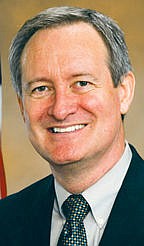Investing in Idaho through opportunity zones
As Congress begins to consider extending Republicans’ 2017 tax law, the Tax Cuts and Jobs Act (TCJA), we must prioritize incentives with a track record of encouraging growth and investment. As the lead Republican on the Senate Finance Committee, I am committed to continuing fiscally responsible, pro-growth tax policy that delivers meaningful results for low-income Americans, including the significant “Opportunity Zone” investments in Idaho.
TCJA created Opportunity Zones to encourage private, long-term investments in low-income urban areas and rural communities with low economic activity. The idea was straightforward: create a tax incentive to attract private investment in areas that might traditionally be overlooked, leading to more jobs and opportunities in those communities.
Opportunity zones have demonstrated notable success in driving investment into distressed areas. By offering tax incentives for investments in opportunity funds, private capital has flowed into areas that did not receive such levels of investment before TCJA.
In Idaho, within just the first two years of the opportunity zones program, 54 percent of the state’s opportunity zones saw investments. According to the Joint Committee on Taxation, by the end of 2022, Idaho had received $130 million in opportunity zone investment. Without the TCJA, these investments might have stayed on the sidelines.
In addition to Opportunity Zones, there are other key tax provisions that spur local economic development, including:
- The New Markets Tax Credit (NMTC), an incentive for investment in low-income communities;
- The Rehabilitation Tax Credit (Historic Tax Credit), a 20-percent credit for qualified expenditures for investments in rehabilitating historic buildings; and
- Tax-Exempt Bonds, which excludes interest from certain state and local government bonds from gross income.
These pro-growth tax policies have produced tangible results in communities around the country.
- In Twin Falls, Idaho, two local developers opened one of our state’s first opportunity zone projects: the Second South Market food hall. Located in a 1920s-era warehouse, the Second South Market houses local food vendors and is the first of its kind in Idaho.
- In Mountain Home, Idaho, the Desert Sage Health Center recently opened a new 30,000 square foot primary care facility. It will serve a more rural part of our state and was made possible due to a new markets tax credit investment.
There are many other examples of projects in Idaho and across the country that demonstrate how these incentives are being put to work.
The TCJA contained a litany of pro-growth tax policies, and I welcome discussions about existing policies and new ideas, including how these tax tools are working, how they can be improved and how Congress can continue to support local economic development in a fiscally responsible way. To learn more about this topic, which we discussed in a recent Finance Committee hearing, visit https://www.finance.senate.gov/hearings.
Mike Crapo represents the state of Idaho in the U.S. Senate. He can be reached at crapo.senate.gov.

